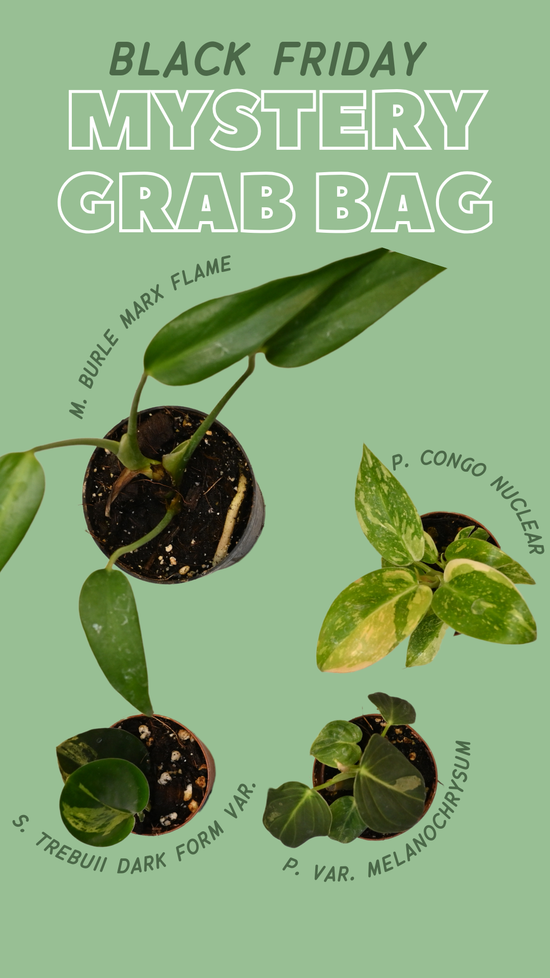
We all love our houseplants, but sometimes, uninvited guests crash the indoor garden party. One such notorious intruder is the thrip – a tiny, sneaky pest that can wreak havoc on our beloved plants. Fear not! Learn how to unveil the world of thrips, expose their devious ways, and DIY solutions to send these uninvited guests packing. Let's get ready to thri-p them off their game and save our leafy lovelies!

Meet the Thrip – The Tiny Terrors
Say hello to the thrip, the ultimate party crasher of the plant world. These minuscule insects are just a few millimeters long and come in a range of colors, from pale yellow to dark brown. With their narrow bodies and fringed wings, they might seem like harmless pests at first glance – but don't be fooled! These sneaky sap-suckers can cause significant damage to our precious houseplants.
Outsmarting Thrips
- Isolation: Quarantine any new plants before introducing them to your indoor jungle. This will give you time to inspect them thoroughly and ensure they aren't bringing any unwanted thrips along.
- Pruning: If you spot thrip-infested leaves, remove and dispose of them promptly. Pruning helps contain the infestation and prevents thrips from spreading to other parts of your plant.
- Boosting Natural Predators: Introduce beneficial insects like ladybugs or lacewings to your indoor garden. These hungry heroes will feast on thrips and other pests, making your plant paradise their buffet.
- Insecticidal Soap & Systemic Granules: When in doubt, spray it out (with insecticidal soap). Spray infested leaves with semi-warm water to knock off any unwelcome hitchhikers before generously spraying each leaf and stem with insecticidal soap. Then for safe measures, sprinkle some systemic granules in the top 1-2" of the soil for future protection. Note - Systemic granules protect a plant for up to 8 weeks so makes sure to sprinkle more on every couple months.
- Leaf Cleaning: Is it a thrip or is it just dust? This goes for all plants but especially infested or suspected plants - clean your leaves! Not only does this help with photosynthesis for your plant but also removal of any surface level aphids. Pro tip - if you use a microfiber glove (which rocks) make sure to clean the glove often to ensure no transferring of aphids from one plant to another

- Regular price
-
$3.00 $5.99 - Regular price
-
- Sale price
-
$3.00 $5.99
Quick view

- Regular price
-
$10.00 $32.00 - Regular price
-
- Sale price
-
$10.00 $32.00
Quick view

- Regular price
-
$22.00 $32.00 - Regular price
-
- Sale price
-
$22.00 $32.00
Quick view

Thwarting Thrips: Spotting the Signs
Detecting thrips can be tricky, as they prefer to hang out on the undersides of leaves. Keep a vigilant eye out for silvery or bronzed spots on leaves, as well as tiny black specks – thrips' droppings. Curling or distorted leaves can also be a telltale sign of their presence. When in doubt, stage a stakeout and observe your plants for any suspicious thrip activity!
DIY Insecticidal Soap
It's time for some thrip-busting DIY fun! Here's how to make your very own insecticidal soap (there are many recipes out there that work great so if you don't have these ingredients on hand, there are plenty of other options):
Ingredients:
1 1/2 teaspoons of neem oil
1/2 tablespoon of mild liquid soap (castile soap works great)
1 quart of water
*Shake spray bottle before each use
And there you have it! With your newfound thrip-busting skills, you're now a certified plant defender. Spot those sneaky thrips, take swift action with DIY insecticidal soap, and make sure your indoor jungle remains a thrip-free zone. As a green thumb superhero, you've got the power to protect your beloved plants from these tiny terrors. Remember, every successful plant party deserves a pest-free guest list! Happy gardening and thrip-thwarting adventures!
XOXO,
LITF




